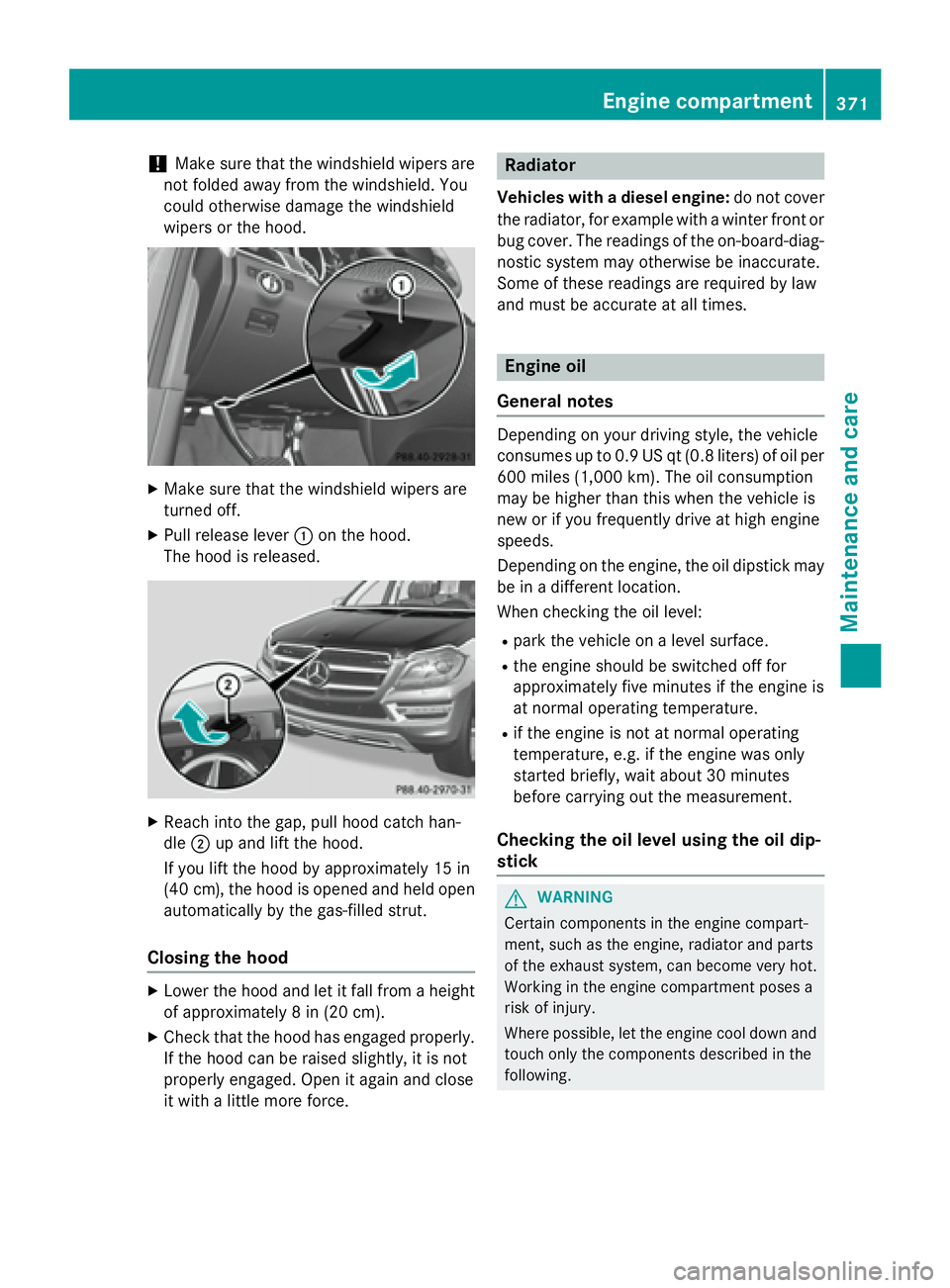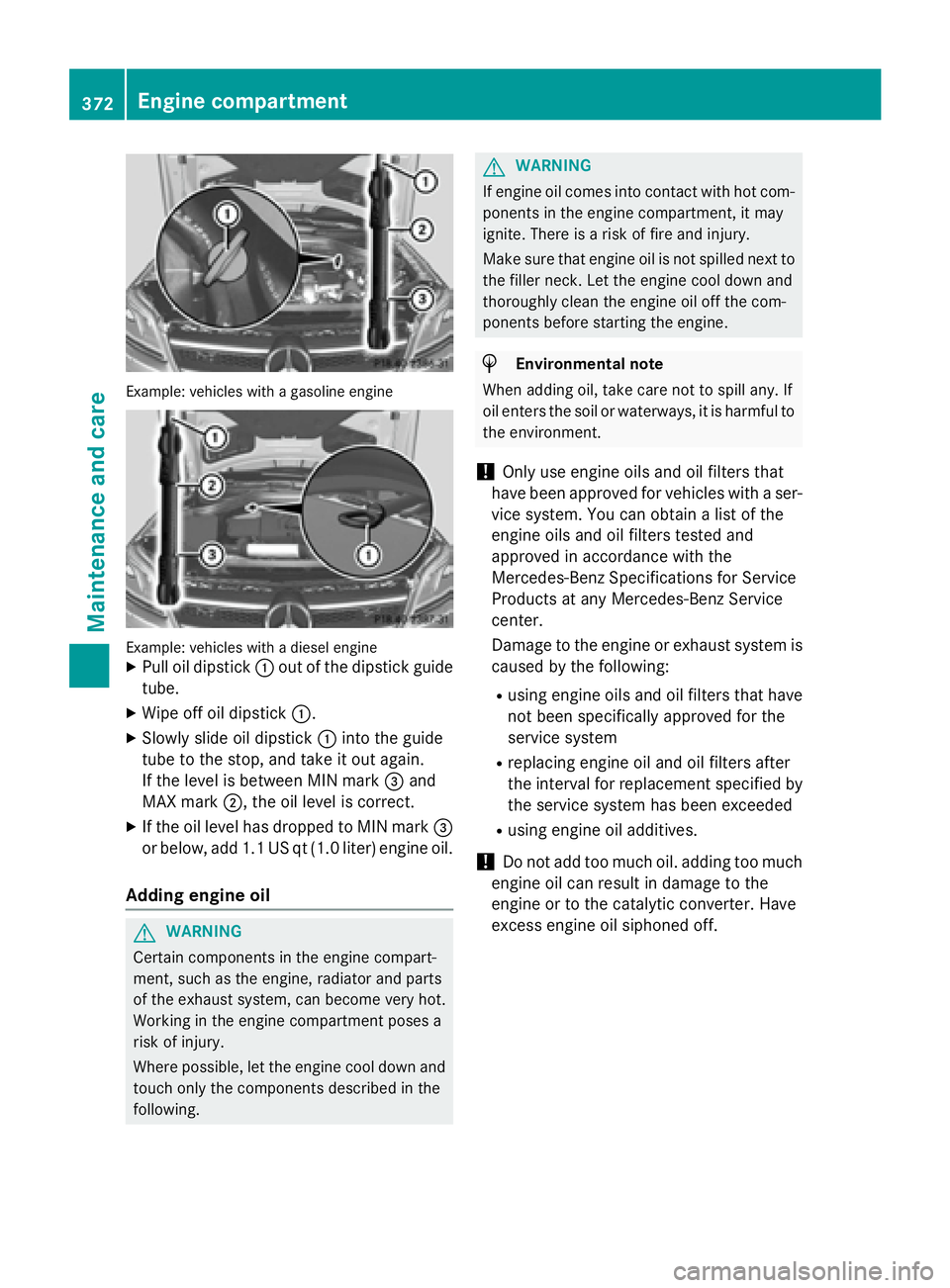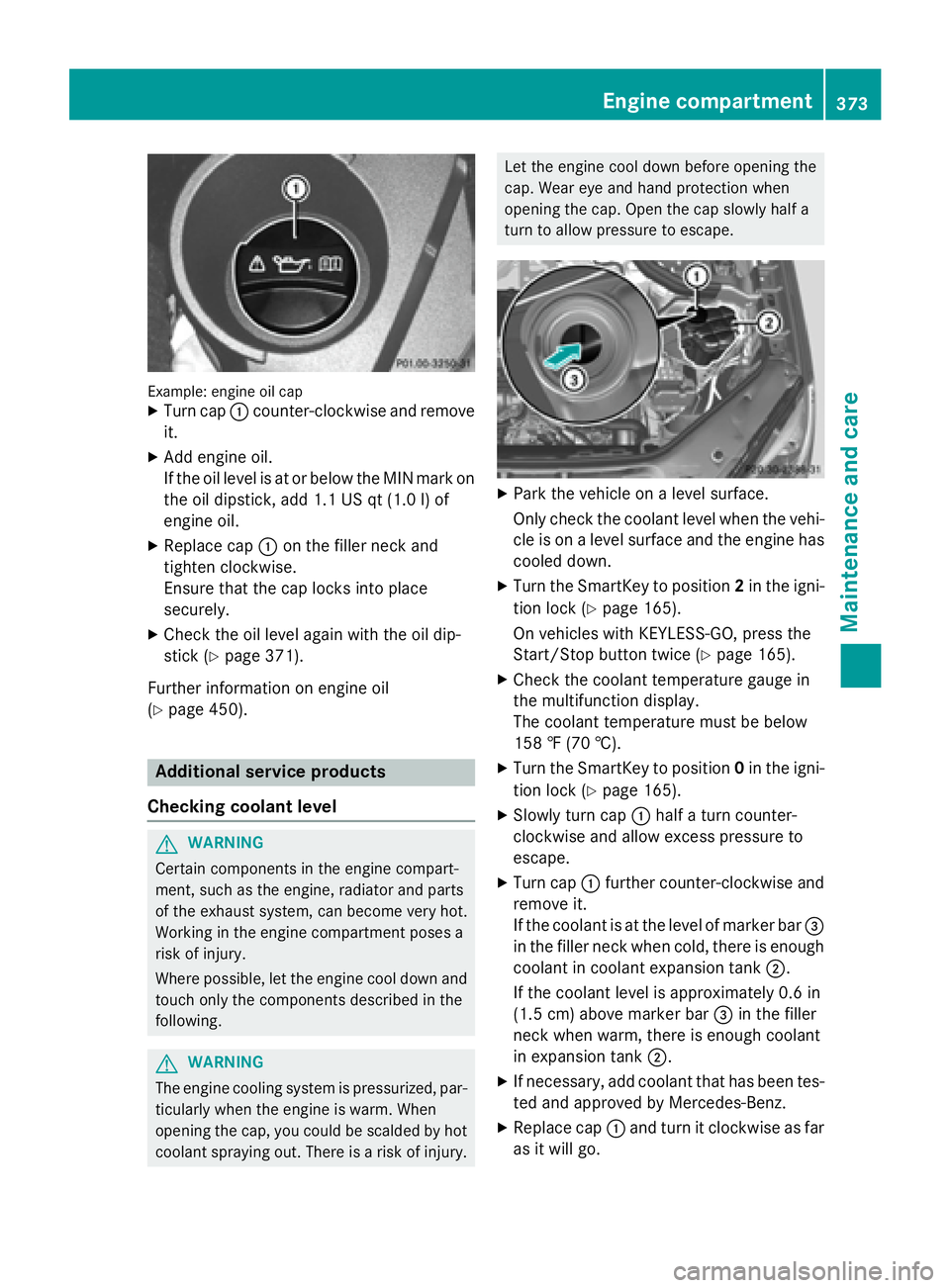2016 MERCEDES-BENZ GL oil dipstick
[x] Cancel search: oil dipstickPage 12 of 462

Driving in winter ............................. 197
Driving on flooded roads ................ 196
Driving on sand .............................. 200
Driving on wet roads ...................... 196
Driving over obstacles ................... 201
Exhaust check ............................... 193
Fuel ................................................ 193
General .......................................... 192
Hydroplaning ................................. 196
Icy road surfaces ........................... 197
Limited braking efficiency on sal-
ted roads ....................................... 195
Off-road driving .............................. 199
Off-road fording ............................. 197
Snow chains .................................. 407
Tire ruts ......................................... 201
Towing a trailer .............................. 264
Traveling uphill ............................... 201
Wet road surface ........................... 195
DSR (Downhill Speed Regulation)
Display message ............................ 313
Function/notes ............................. 257
DVD video
Operating (on-board computer) ..... 279
E
EASY-ENTRY feature
Activating/deactivating ................. 285
Function/notes ............................. 123
EASY-EXIT feature
Crash-responsive ........................... 124
Function/notes ............................. 123
Switching on/off ........................... 285
EBD (electronic brake force distri-
bution)
Display message ............................ 293
Function/notes ................................ 75
ECO display
Function/notes ............................. 193
On-board computer ....................... 276
ECO start/stop function
Automatic engine start .................. 170
Automatic engine switch-off .......... 169
Deactivating/activating ................. 170
General information ....................... 169
Important safety notes .................. 169
Introduction ................................... 169 Electronic Stability Program
see ESP ®
(Electronic Stability Program)
Emergency
Automatic measures after an acci-
dent ................................................. 60
Emergency release
Driver's door .................................... 92
Vehicle ............................................. 92
Emergency spare wheel
General notes ................................ 438
Important safety notes .................. 438
Removing ....................................... 439
Storage location ............................ 439
Technical data ............................... 441
Emergency Tensioning Devices
Activation ......................................... 58
Emergency unlocking
Tailgate ............................................ 97
Emissions control
Service and warranty information .... 25
Engine
Check Engine warning lamp ........... 334
Display message ............................ 306
ECO start/stop function ................ 169
Engine number ............................... 447
Irregular running ............................ 172
Jump-starting ................................. 395
Starting (important safety notes) ... 167
Starting problems .......................... 172
Starting the engine with the
SmartKey ....................................... 167
Starting with KEYLESS-GO ............. 168
Switching off .................................. 189
Tow-starting (vehicle) ..................... 400
Engine electronics
Problem (malfunction) ................... 172
En g
ine jump starting
see Jump starting (engine)
Engine oil
Adding ........................................... 372
Additives ........................................ 451
Checking the oil level ..................... 371
Checking the oil level using the
dipstick .......................................... 371
Display message ............................ 308
Filling capacity ............................... 451
Notes about oil grades ................... 450
Notes on oil level/consumption .... 37110
Index
Page 373 of 462

! Make sure that the windshield wipers are
not folded away from the windshield. You
could otherwise damage the windshield
wipers or the hood. X
Make sure that the windshield wipers are
turned off. X
Pull release lever �C on the hood.
The hood is released.
X
Reach into the gap, pull hood catch han-
dle �D up and lift the hood.
If you lift the hood by approximately 15 in
(40 cm), the hood is opened and held open
automatically by the gas-filled strut.
Closing the hood X
Lower the hood and let it fall from a height
of approximately 8 in (20 cm). X
Check that the hood has engaged properly.
If the hood can be raised slightly, it is not
properly engaged. Open it again and close
it with a little more force. Radiator Vehicles with a diesel engine: do not cover
the radiator, for example with a winter front or
bug cover. The readings of the on-board-diag-
nostic system may otherwise be inaccurate.
Some of these readings are required by law
and must be accurate at all times.
Engine oil
General notes Depending on your driving style, the vehicle
consumes up to 0.9 US qt (0.8 liters) of oil per
600 miles (1,000 km). The oil consumption
may be higher than this when the vehicle is
new or if you frequently drive at high engine
speeds.
Depending on the engine, the oil dipstick may
be in a different location.
When checking the oil level: R
park the vehicle on a level surface. R
the engine should be switched off for
approximately five minutes if the engine is
at normal operating temperature. R
if the engine is not at normal operating
temperature, e.g. if the engine was only
started briefly, wait about 30 minutes
before carrying out the measurement.
Checking the oil level using the oil dip-
stick
G WARNING
Certain components in the engine compart-
ment, such as the engine, radiator and parts
of the exhaust system, can become very hot.
Working in the engine compartment poses a
risk of injury.
Where possible, let the engine cool down and
touch only the components described in the
following.Engine compartment 371
Maintenance and care Z
Page 374 of 462

Example: vehicles with a gasoline engine
Example: vehicles with a diesel engine X
Pull oil dipstick �C out of the dipstick guide
tube. X
Wipe off oil dipstick �C .X
Slowly slide oil dipstick �C into the guide
tube to the stop, and take it out again.
If the level is between MIN mark �
Page 375 of 462

Example: engine oil cap X
Turn cap �C counter-clockwise and remove
it. X
Add engine oil.
If the oil level is at or below the MIN mark on
the oil dipstick, add 1.1 US qt (1.0 l) of
engine oil. X
Replace cap �C on the filler neck and
tighten clockwise.
Ensure that the cap locks into place
securely. X
Check the oil level again with the oil dip-
stick ( Y
page 371).
Further information on engine oil
( Y
page 450).
Additional service products
Checking coolant level
G WARNING
Certain components in the engine compart-
ment, such as the engine, radiator and parts
of the exhaust system, can become very hot.
Working in the engine compartment poses a
risk of injury.
Where possible, let the engine cool down and
touch only the components described in the
following.
G WARNING
The engine cooling system is pressurized, par-
ticularly when the engine is warm. When
opening the cap, you could be scalded by hot
coolant spraying out. There is a risk of injury. Let the engine cool down before opening the
cap. Wear eye and hand protection when
opening the cap. Open the cap slowly half a
turn to allow pressure to escape.
X
Park the vehicle on a level surface.
Only check the coolant level when the vehi-
cle is on a level surface and the engine has
cooled down. X
Turn the SmartKey to position 2 in the igni-
tion lock ( Y
page 165).
On vehicles with KEYLESS-GO, press the
Start/Stop button twice ( Y
page 165).X
Check the coolant temperature gauge in
the multifunction display.
The coolant temperature must be below
158 ‡ (70 †). X
Turn the SmartKey to position 0 in the igni-
tion lock ( Y
page 165). X
Slowly turn cap �C half a turn counter-
clockwise and allow excess pressure to
escape. X
Turn cap �C further counter-clockwise and
remove it.
If the coolant is at the level of marker bar �